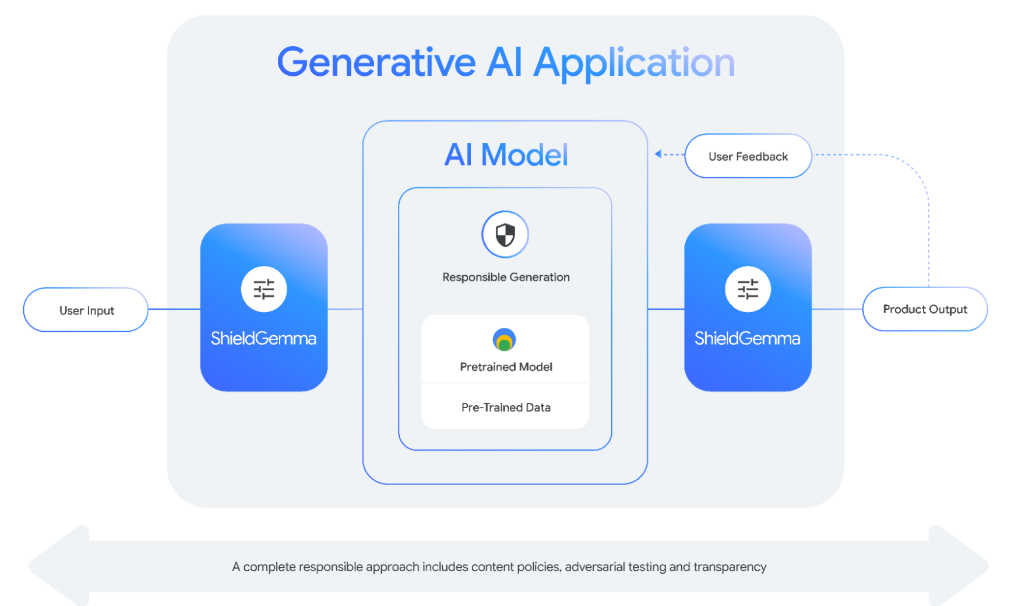Google LLC is advancing its efforts in open-source artificial intelligence with three new additions to its Gemma 2 family of large language models, which it said are notably “smaller, safer and more transparent” than many of their peers.
The company released its first Gemma models back in February. They’re different from its flagship Gemini models, which are used in the company’s own products and services and are generally considered to be more advanced. The main differences are that the Gemma models are much smaller and fully open-source, meaning they’re free to use, whereas the Gemini family models are bigger and closed-source, so developers must pay for access.
The Gemma models are based on the same research as the Gemini LLMs, and represent Google’s effort to foster goodwill in the AI community, similar to how Meta Platforms Inc. is doing the same with its Llama models.
Of the three new models announced today, the most important is Gemma 2 2B, which is a lightweight LLM designed for generating and analyzing text. According to Google, it’s designed to run on local devices such as laptops and smartphones, and it is licensed for use in research and commercial applications.
Although Gemma 2 2B contains just 2.6 billion parameters, Google said it demonstrates performance that’s on a par with, and sometimes even superior to much larger counterparts, including OpenAI’s GPT-3.5 and Mistral AI’s Mistral 8x7B.
To back up its claims, Google published the results of independent testing by LMSYS, an AI research organization. According to LMSYS, Gemma 2 2B achieved a score of 1,126 in its chatbot evaluation arena, surpassing Mixtral-8x7B, which scored 1,114, and GPT-3.5-Turbo-0314, which scored 1,106. The results are impressive, as the latter models have almost 10 times more parameters than the latest edition of Gemma.
Google said Gemma 2 2B’s capabilities extend beyond size efficiency. It scored 56.1 on the Massive Multitask Language Understanding benchmark, and 36.6 on the Mostly Basic Python Programming test, improving on the score of earlier Gemma models.
The results challenge the idea in AI that larger parameter size equates to better performance. Instead, Gemma 2 2B shows that by employing more sophisticated training techniques and using superior architectures and higher-quality training data, it’s possible to compensate for a lower number of parameters.
Google said its work could help initiate a shift by AI companies, away from a focus on building ever-larger models. Instead, it could lead to AI model makers focusing more on refining existing models to make them perform better.
In addition, Google said Gemma 2 2B also illustrates the importance of using model compression and distillation techniques. The company explained that Gemma 2 2B was developed by distilling the knowledge from much larger models. It hopes that progress in this area will enable the development of more accessible AI with reduced computational power requirements.
The other, more specialized models announced by Google today include ShieldGemma, which is actually a collection of safety classifiers designed to catch toxic responses such as hate speech, harassment and sexually explicit content. ShieldGemma is built on top of the original Gemma 2 model, and can be used by developers to filter malicious prompts that encourage models to respond in an undesirable way. It can also be used to filter the actual responses of LLMs.

Finally, Gemma Scope is an attempt to bring greater transparency to the Gemma 2 models. It does this by zooming in on specific parts of the Gemma 2 models, helping developers to interpret their inner workings.
“Gemma Scope is made up of specialized neural networks that help us unpack the dense, complex information processed by Gemma 2, expanding it into a form that’s easier to analyze and understand,” Google wrote in a blog post. “By studying these expanded views, researchers can gain valuable insights into how Gemma 2 identifies patterns, processes information and ultimately makes predictions.”
Gemma 2 2B, ShieldGemma and Gemma Scope are all available to download now from various sources, including Hugging Face.
Featured image: SiliconANGLE/Microsoft Designer
Your vote of support is important to us and it helps us keep the content FREE.
One click below supports our mission to provide free, deep, and relevant content.
Join our community on YouTube
Join the community that includes more than 15,000 #CubeAlumni experts, including Amazon.com CEO Andy Jassy, Dell Technologies founder and CEO Michael Dell, Intel CEO Pat Gelsinger, and many more luminaries and experts.
THANK YOU

